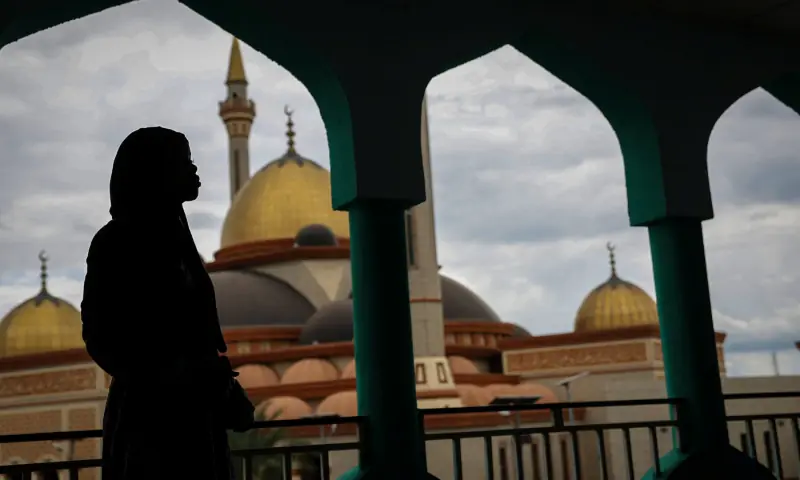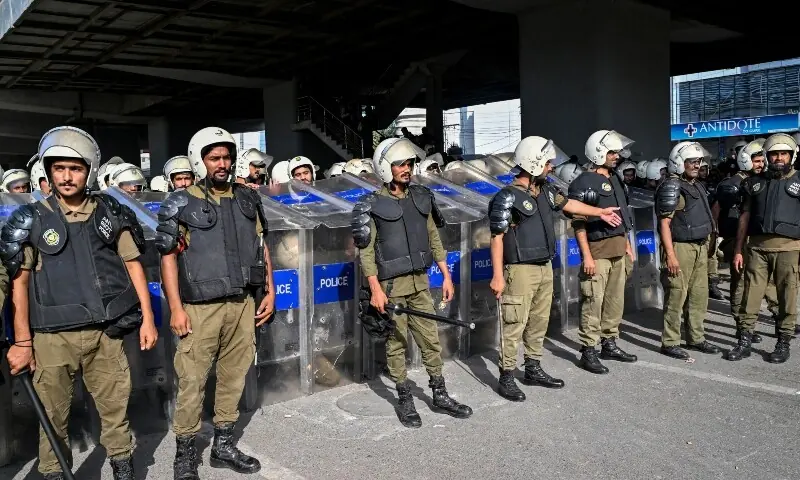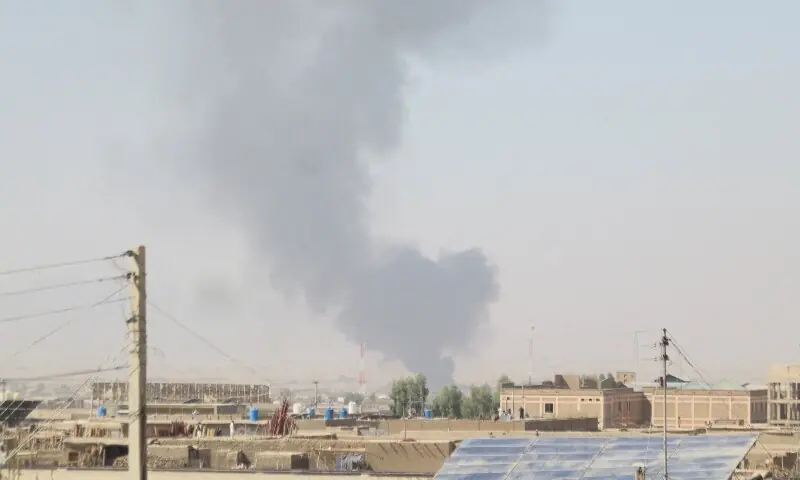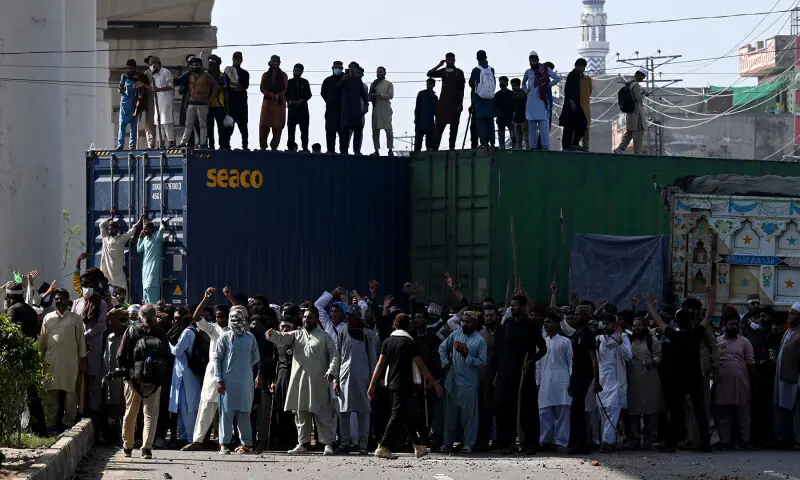In the Muslim-majority Kwara state of north-central Nigeria, where religious traditions shape daily life, a group of girls challenge cultural norms by playing football.
They have embraced the team spirit of the game, the competitive thrill, plus the ups and downs of winning and losing, all while trying to ignore the disapproval of those who consider it inappropriate for women who choose to dress modestly.
As Maryam Muhammed laces up her boots and heads to soccer training at a local school in Ilorin, she feels the stifling heat (aggravated by her hijab and leggings) as well as the contempt of some members of the local community.
Muhammed, 17, regularly hears taunts as he walks to his training sessions at the Model Queens Football Academy.
“They tell me I won’t achieve anything. But I believe I will achieve something great,” he said.
Despite the discomfort, it’s important for her to cover up when she plays instead of wearing shorts and a T-shirt.
“Sometimes I feel like I want to open the hijab, but I shouldn’t expose my hair,” she said. “I have to wear it like a good Muslim.”
Hijabs, which cover the head and neck, were banned by soccer’s world governing body FIFA for safety reasons in 2007, a move that led to the Iranian women’s team being excluded from a qualification match for the 2012 Olympics.
The ban was relaxed in 2012 and the hijab was fully permitted in 2014.
Nouhaila Benzina of Morocco became the first player to wear a hijab at a senior women’s World Cup in 2023.
Mother criticized for letting her daughter play
Muhammed’s mother, Kehinde Muhammed, has been criticized for allowing her daughter to play.
“A lot of people discouraged me,” he said.
“But I respect my children’s decisions. I support her and continue to pray for her.”
Sew hijabs to match the team jerseys.
“I advise you that this is the normal way one should dress as a Muslim,” he said.
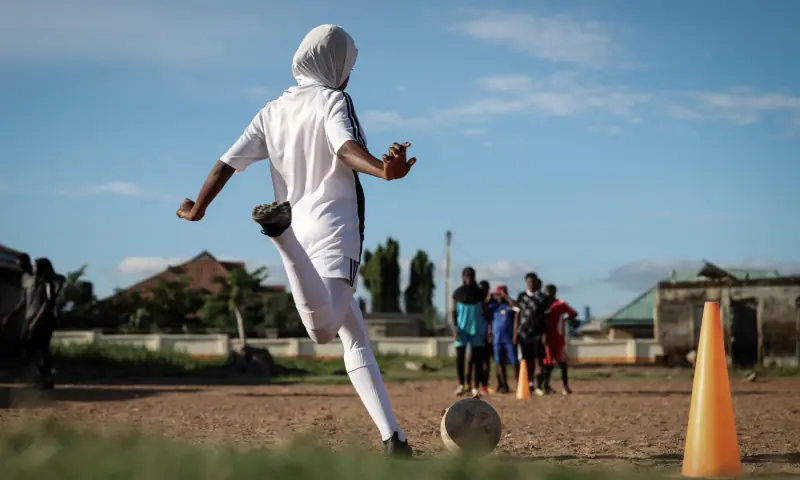
Model Queens coach Muyhideen Abdulwahab is trying to change perceptions.
“We go out to meet the parents and tell them that there are laws that allow modest dress,” he said. “Despite that, some still say no.”
Bashirat Omotosho, 19, a member of the team, is passionate about the sport, but she cannot always attend training because she has to help her mother sell puff pastry, a fried dough snack, at a street stall so that the family can earn enough money.
Sometimes the team runs past the cubicle as part of their training, which is frustrating for her.
“Training is usually in the morning, but I have to be here,” he said, handing out snacks to clients.
“I can’t leave my mother, this is how I make money.”
His mother, Titilayo Omotosho, was initially hostile to the teenager’s sporting ambitions.
“Why would a woman choose football?” she asked.
But after her husband gave his blessing, the mother relented.
“Seeing other Muslim girls succeed, like Asisat, encouraged us to let her play,” she said, referring to Nigerian star Asisat Oshoala, a record six-time African Women’s Footballer of the Year.
Oshoala, who does not wear a hijab in the countryside, comes from Lagos in southwestern Nigeria, where Islam is less conservative.
Women’s football gains popularity
Despite growing interest, female participation in football remains low in Ilorin, said Ambali Abdulrazak, a local football administrator.
The Nigerian Women’s Football League (NWFL) is among the strongest in Africa, led by clubs in the south of cities such as Lagos and Port Harcourt, where infrastructure and social support are strong.
By contrast, northern and central regions face cultural and religious barriers, although grassroots efforts are expanding.
Nationally, the sport’s popularity is increasing, fueled by the success of the women’s national team, the Super Falcons, as well as increased sponsorships and grassroots programs.
NWFL viewership has grown 40 percent since 2020, and match attendance is up 35 percent in 2024, according to Nigerian media company iTelemedia, which tracks viewership trends in local leagues.
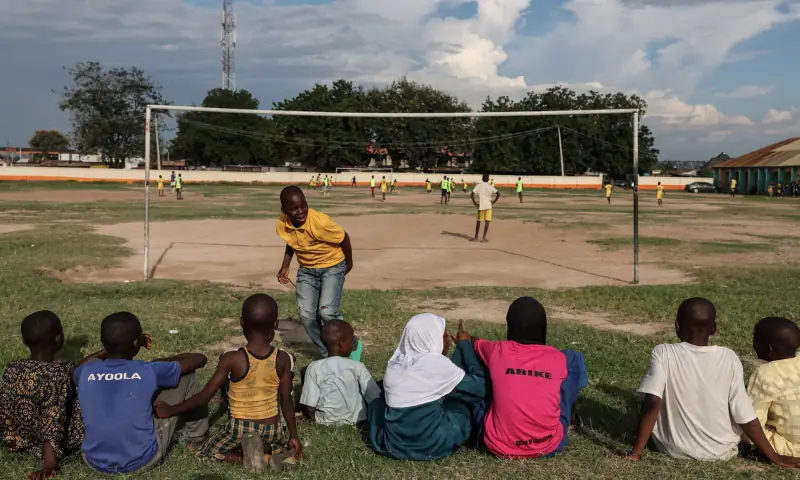
As the sun set, Muhammed and his teammates ran across a sandy field at the local school during one of their training sessions, their voices rising over the gusts of a muezzin call to prayer from a nearby mosque.
On August 29, Muhammed captained Model Queens in the final of a youth tournament. They lost. As the whistle blew, he high-fived his teammates and applauded as they received their runner-up medals. Later, alone in her room, she burst into tears of defeat.
But the support of her family and her faith have kept her going.
“I really love this sport. I have a passion for it,” he said. “Since my parents support me, nothing stops me. Football is my dream.”
Header image: Model Queens Football Academy team players Bashirat Omotosho, 19, and Maryam Muhammed, 17, practice before the final match of the Youth Tournament against Kwara Ladies FC in Ilorin, Kwara state, Nigeria, August 29, 2025. – Reuters





